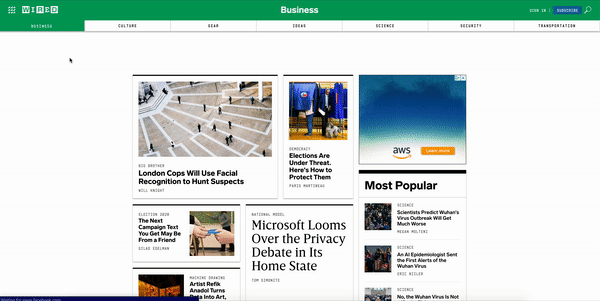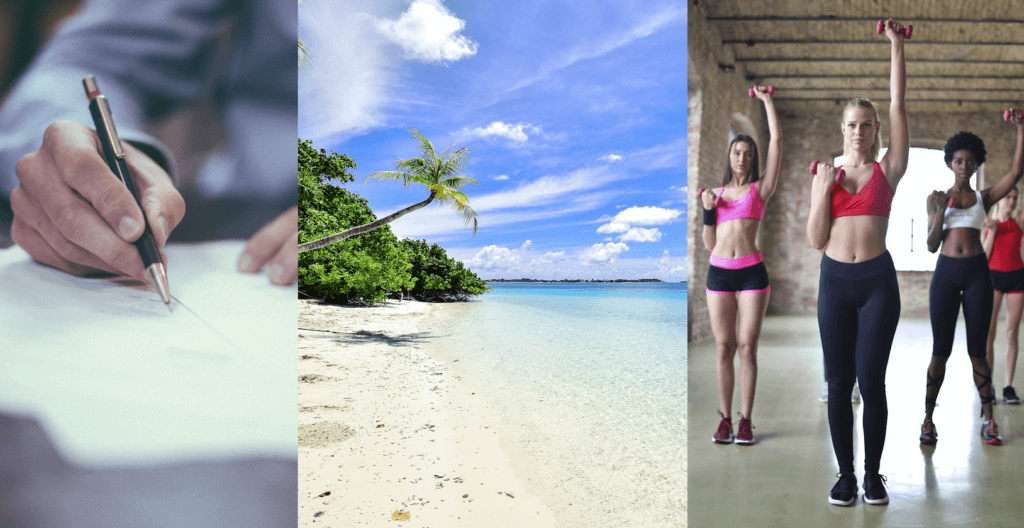You’ve seen millions of them in your lifetime on the internet, but you probably can’t remember a single one. No, I’m not referring videos of cute dogs—I’m talking about the infamous website banner advertisement. They came with the advent of digital advertising and changed the landscape of the internet as we know it—you can now be prompted to click, buy, sign up, and learn more all at once and in multiple locations on the same page.

Do you want to learn more about Amazon Web Services, sign up to be in the Army, and subscribe to WIRED, all at once? Of course not.
Over time, consumers have become so used to seeing ads that their eyes have stopped registering them—we even have a term for it in the industry: Banner Blindness, or “the tendency of web visitors to ignore banner ads, even when banners contain information visitors are actively seeking,” according to marketingterms.com.
So what does this have to do with marketing & brand photography?
As history repeats itself, so to do the trends in the advertising industry. What happened with banners and banner blindness is now happening with stock photography, in a phenomenon I refer to as becoming stocksighted. Derived from the term shortsighted, which means lacking imagination or foresight, stocksighted refers to the lack of creativity, capability, or will power of a brand to capture its own unique photography, and the resulting choice to lean on stock photos for use on websites, social media, and advertising.
There are three main types of stock photos: those of objects, those of places, and those of people.
You’ve definitely seen images—like the three below—used in ads for businesses, vacation destinations, fitness courses, and everything in between.

Oh, come on… they aren’t even sweating!
Now I want you pause for a moment. Take a second to think about the last time an ad with a stock photo like the ones above actually made you take an action, or even feel positively towards a brand.
Pretty tough to think of an example, huh?
What happened to banner ads is happening again with stock photos—our brains are becoming so accustomed to seeing them that they no longer register in our minds. Stock photos tend to be unexceptional, disconnected, and without emotion or personality, but to take an action or make a purchase in 2020, consumers are seeking customization, relatability, and empathy. See the issue?
What about stock photos of people?
Yes, you can even be stocksighted when using images of people. As advertisers, we often preach to our clients that “people respond to people,” and fundamentally this is true. Studies have shown that people are more likely to take action on an advertisement with a person in it who looks similar to them—we love something relatable. This is true of stock photography as well—a stock photo of a person is usually more effective than a stock photo of a building. However, as our brains adjusted to banner ads, so too have they adjusted to the people in stock photos.
Look at the photo below. Something just seems off, doesn’t it? The staged stock photo lacks emotion and personality—it doesn’t seem real. And that disconnect between stock photos and reality can have major ramifications on your brand and marketing efforts.

What is she pointing to? There are only a few words on that pristine notepad! Is there even coffee in that cup? Laptop, coffee, notepad, dry erase marker, pointing at something… We’ve got stock photo bingo!
Creating a strategy for, and capturing unique brand photography isn’t easy—it can be expensive and time consuming—so brands often fall back to stock photography because of its availability and relatively inexpensive cost, thus becoming stocksighted. Their marketing campaigns don’t reach their full potential, and what’s worse, their brands take a hit with consumers because they are unable to relate and see themselves as part of the brand or its associated community.
How your brand should move forward.
Remember those banner ads I brought up before? Many businesses caught on to the effects of banner blindness and limited or removed the number of ads on their website. Google—whose search results are almost always preempted by ads—recently tried to make their ads blend in more with search results to boost engagement, instead of removing the ads or limiting the quantity people see. The result? Enough backlash to force them to reconsider in a matter of days.
The morale of the story? Don’t be stocksighted.
A stock photo—like Google’s new ads—is fundamentally a shortcut to try and generate business. But it’s 2020, and consumers are smart and savvy. They won’t engage with your brand if you take shortcuts to try and win them over.
Be creative. Be unique. Show your brand’s personality every chance you get. Consumers will take notice. Make your brand photography and marketing something to remember—don’t become just another banner ad.
Interested to see how your brand could benefit from some creative photography? Reach out to us!